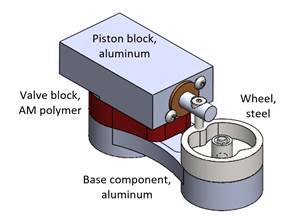Use the SMART Criteria to Develop Your Company's Goals
Be SMART, and use these five characteristics to improve your company.
Share





In this rapidly changing world, the only way for companies to remain competitive is for managers and team leaders to look for ways to improve their operations. If others are getting better and you are staying the same, you are actually falling behind.
A tried-and-true method for improvement is establishing meaningful objectives at all levels of a company to foster ownership and accountability on all levels. So, how should these meaningful objectives be developed? It starts with an understanding of the fundamentals of an objective.
In simple terms, an objective narrowly focuses on achieving a desired outcome. To be meaningful, this outcome must include five characteristics that can be remembered using the acronym “SMART.” A SMART objective is Specific, Measurable, Achievable, Relevant and Time-based. Let’s explore these SMART characteristics further.
- Specific. The desired outcome must be clear. There should be no ambiguous descriptors, and numbers should be included wherever possible. The following table shows three examples of objectives with varying levels of specificity. Example 3 is the best because it provides clarity in which lines to target for improvement and the percentage to improve.
|
Example 1 |
Example 2 |
Example 3 |
|
Increase Output |
Increase output on lines 1, 2 & 3 |
Increase output on lines 1, 2 & 3 by 5% |
|
Vague |
Better |
Best |
- Measurable. This provides a means of comparing results over a period of time. Measures enable us to see if we are on track to achieving a desired outcome. The measures should be easy to obtain (avoiding paralysis by analysis) and accurately reflect actual performance. In last month’s column, I discussed two types of measures: lead and lag measures. Ideally, both should be employed for an objective. In this way, you know how you are doing and what you should do in the future to achieve your goals.
- Achievable. An objective should be challenging, as this can motivate people, but it must also be viewed as within a person’s power to achieve. Neither an objective that is too easy nor one that is too hard will lead to significant improvement. If it is too hard, it may actually demotivate some employees. A lack of power to control or influence the outcome leads to a lack of commitment to the objective.
- Relevant. An objective must be useful and appropriate to the operation. Achieving relevant objectives improve performance. For example, training employees to run all equipment increases resource availability. Objectives that appear irrelevant are less likely to be accepted and possibly even viewed as a waste of time and effort. An example of this would be a run-time objective for a machine that is rarely used. Further examples of relevant objectives applicable to different departments are shown in the table below.
|
Department |
Alternative Relevant Objectives |
||
|
Quality |
Number of Audits Completed |
Corrective Actions Closed |
First Articles Completed |
|
Finance |
Average Receivables Days |
Number of Invoices Processed |
Number of Fully Trained Employees |
|
Maintenance |
Mean Time Between Failures |
Number of P/M’s Completed |
Number of Inventory Stock Outs |
- Time-based. The objective must be specific with respect to time. Time assignment conveys a sense of urgency and prevents objectives from dragging out indefinitely. Selected timeframes can be days, weeks, months or anything up to a year. Most objectives are targeted for completion within a year, which likely coincides with an organization’s fiscal year. Examples of time-based objectives include: The new manual will be completed by the end of the second quarter, 20XX; New recruit training will be completed by March 31; The new machine will be operational by June 1; and The new procedure will take effect September 10.
Meaningful objectives must be SMART. By basing your objectives on the five key characteristics discussed, you can foster a results-oriented operation in which continuous improvement is recognized as crucial to your company’s ability to meet and beat the competition.
Related Content
Workholding Fixtures Save Over 4,500 Hours of Labor Annually
All World Machinery Supply designs each fixture to minimize the number of operations, resulting in reduced handling and idle spindle time.
Read MoreIn Moldmaking, Mantle Process Addresses Lead Time and Talent Pool
A new process delivered through what looks like a standard machining center promises to streamline machining of injection mold cores and cavities and even answer the declining availability of toolmakers.
Read MoreManufacturing Technology and Training in Europe
NTMA’s European Tech Tour exposed attendees to the latest technology and traditional training methods used by European manufacturers.
Read MoreSolve Worker Shortages With ACE Workforce Development
The America’s Cutting Edge (ACE) program is addressing the current shortage in trained and available workers by offering no-cost online and in-person training opportunities in CNC machining and metrology.
Read MoreRead Next
Machine Shop MBA
Making Chips and Modern Machine Shop are teaming up for a new podcast series called Machine Shop MBA—designed to help manufacturers measure their success against the industry’s best. Through the lens of the Top Shops benchmarking program, the series explores the KPIs that set high-performing shops apart, from machine utilization and first-pass yield to employee engagement and revenue per employee.
Read MoreAMRs Are Moving Into Manufacturing: 4 Considerations for Implementation
AMRs can provide a flexible, easy-to-use automation platform so long as manufacturers choose a suitable task and prepare their facilities.
Read More


















